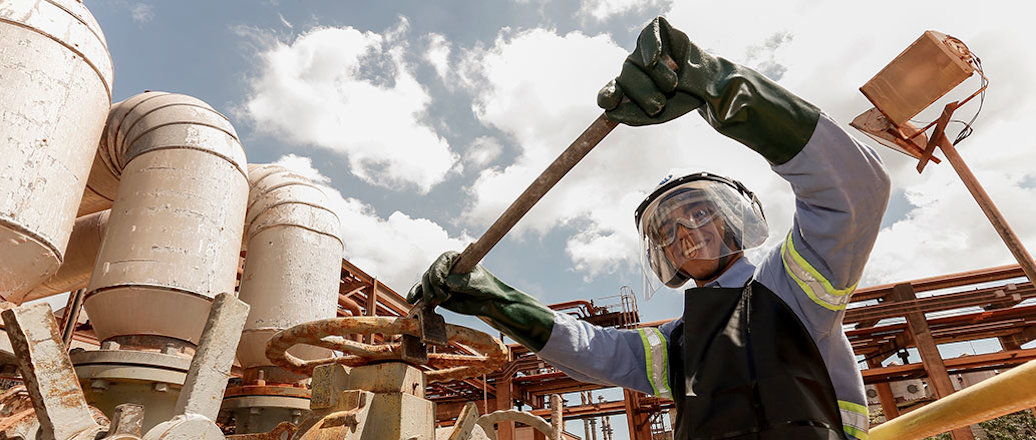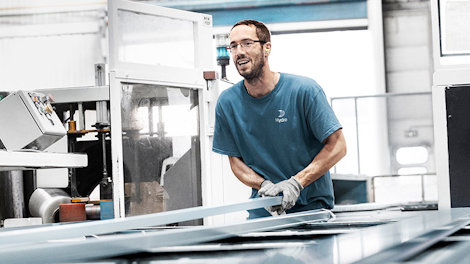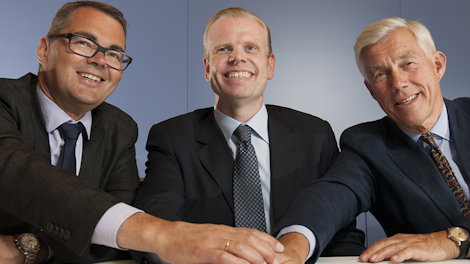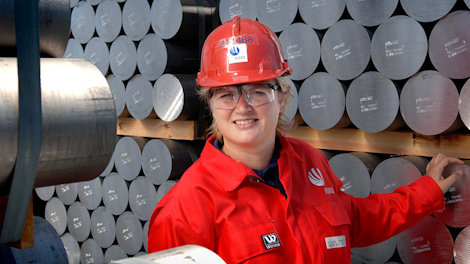More than a hundred years after the company's inception, Hydro became a fully-fledged aluminum company with activities throughout the entire value chain, from the mining of bauxite to the production of finished products.
It was bauxite which Hydro's founder Sam Eyde lacked when he held the rights in 1902 to what was to become the world’s largest hydroelectric power plant. The Rjukan waterfall was enormous, a tourist attraction which for years had drawn the cream of European society high up into the Norwegian mountains.
As a young engineering student in Germany, Eyde was inspired by his visits to the home of Werner von Siemens, inventor of the dynamo, and the determined and visionary Eyde saw the potential that lay in Norwegian hydroelectric power. Aluminum, one of the exciting materials of the future, was an obvious product.
The problem was finding a way of transporting large quantities of raw material from the coast and into the roadless Norwegian mountainside. Transporting energy in the opposite direction was considered equally impossible.
Providing food for a growing population
The answer was to forget about the new material and concentrate instead on the more pressing problem of the day: providing enough food for a growing population. In partnership with the researcher Kristian Birkeland, Eyde found the key to utilizing hydroelectric power to achieve history's first successful industrial production of fertilizer. The other input factor was nitrogen in the air, and fresh air was one commodity of which there was an abundance in the Norwegian mountainside.
Fertilizer would come to be Hydro’s most important product for 75 years, and since 2004 this activity has been continued in the world's largest fertilizer company, Yara.
However, Hydro’s management never quite abandoned the idea of aluminum. Several attempts were made during the interwar period. It was not until during the Second World War that it appeared to succeed – with a major expansion financed by the Germany occupying forces. The light metal plants at Herøya were bombed by the Allies in 1944, just before production was due to start up. The collaboration with Hermann Göring and the German occupying forces is the darkest chapter in Hydro's history.
Diversification based on energy
In the early 1960s the fertilizer production activities faced unexpected competition from new actors producing mineral fertilizer from oil and gas. In 1963 the company’s management responded to this new development by making three strategically important decisions: shift the fertilizer production process from electrochemical to petrochemical production, build an aluminum plant at Karmøy, and enter into collaboration with five French companies to explore for oil in the North Sea.
This was to form the basis for the company’s strong growth in several directions over the next 40 years.
In 1986, Hydro acquired Årdal og Sunndal Verk (ÅSV), a company whose roots went back to 1915, when NACO began building the aluminum plant at Høyanger. This was led by the same man who had built Europe’s largest hydroelectric plant at Notodden in 1907 and the world’s largest at Rjukan a few years later: Hydro engineer Sigurd Kloumann.
At last – full focus on aluminum
In 2002 Hydro became Europe’s largest aluminum producer through its acquisition of the German company Vereinigte Aluminumwerke (VAW), a company whose roots also dated back to around 1915.
In the 1990s Hydro’s management began to reduce the scope of the company’s core areas. This work was completed in 2007 and 2008 when the company’s highly profitable oil activities were merged with Statoil and its petrochemical activities were sold to Ineos.
Hydro has since focused exclusively on its aluminum production activities. In 2010, production started up at Qatalum, the company’s gigantic, co-owned aluminum plant in the Persian Gulf. Hydro continues to produce useful products from natural resources. And energy continues to be a vital input factor, along with bauxite.
Updated: May 15, 2024




